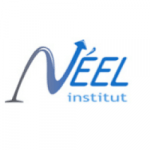AWS Proposes Deploying Army of Cat Qubits to Drive Down Errors
(Becky Bracken) Existing error rates need to improve exponentially before quantum computers can be put to practical use. In fact Fernando Brandão, researcher with AWS Center for Quantum Technology told Inside Quantum Technology that at the current rate of innovation, a computer with sufficiently low error rates could be as far out as 70 years away.
However, Brandão and his team at AWS is working to make that happen on a vastly shorter timeline. Their latest research on “Building a fault-tolerant quantum computing using concatenated cat codes” proposes what they hope will be a big leapfrog forward.
“These are pretty fragile objects,” Brandão said about quantum computers and the need for his team’s work. “We need to improve their error rates by about a billion times.”
Cat Qubits
A new theoretical architecture from researchers with AWS Center for Quantum Technology proposes building many, redundantly coded Schrödinger’s cat qubits to minimize bit flip errors at the hardware level.
“We find that with around 1,000 superconducting circuit components, one could construct a fault-tolerant quantum computer that can run circuits which are intractable for classical supercomputers,” the paper said. “Hardware with 32,000 superconducting circuit components, in turn, could simulate the Hubbard model in a regime beyond the reach of classical computing.”
Cat qubits exist in opposed states at the same time, turning on its head the cat used in Schrödinger’s teaching example. He used his cat to explain cannot be both alive and dead at the same time, existing in two states simultaneously. Cat qubits, however, can.
“More than two decades ago, researchers in the quantum optics community pointed out that these states can be used to encode a qubit of information in an oscillator,” the team’s paper explained. “The reason cats are useful is that once the cat is stabilized by two-photon loss and driving, bit-flip errors become extremely rare while phase-flip errors become more frequent.”
QEC Code Applied to Cat Qubit Pairs
The research explained these increased phase-flip errors can be addressed by correcting errors with active quantum error correction (QEC) codes. The AWS team suggests measuring adjected pairs of cat qubits with repetition code. They added this approach combining cat qubits with repetition codes improved error rates five-fold.
Brandão explained the next step in their research will be to move into hardware development. Ultimately, he added, scientists need to figure out how to build better qubits, better gates and ultimately reduce errors enough to make quantum computers competitive with with classic computers.
The next big breakthrough he added, will be the first team to build a logical qubit. He wouldn’t guess how far away that is but would generally speculate researchers will need another handful of years.
After that?
“Two logical qubits and one gate,” he added. “That would be exciting.”


















